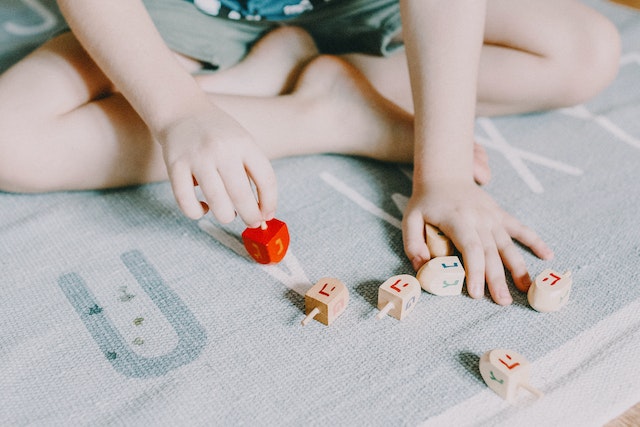The Dreidel, an unassuming children’s game, has been given a very auspicious place in Jewish tradition. But there are several interpretations of its origin and meaning in our history.
The Ancient Dreidel
A timeless symbol of Hanukkah, the Dreidel plays a central role in our celebrations, but have you ever wondered why? Tradition tells us that during the time of the Hanukkah story, the Syrian/Greek powers forbade the Jews from learning Torah. Despite this decree, Jewish children were sent to learn, Dreidels in hand. If authorities caught the children together they would immediately take out the Dreidels making it look like an innocent group of kids playing a simple game.
Others believe that dreidel is the Yiddish translation of the old German word Trendel, a spinning top game dating back to the 16th century. European Jews incorporated this toy into the Hannukah celebrations, ironically “assimilating” a toy to symbolize a holiday dedicated to our fight and refusal to assimilate.
The Spiritual Side
For some, the dreidel offers spiritual symbolism of the deeper aspects of our existence. Its fast spinning represents the blur of our busy lives sometimes spinning out of control. The kabbalah recognizes the four sides as representing the four major conquering empires of the Jewish people throughout history. Also seen in the four sides a symbol of the four primary human natures, ego, bodily urges, reason, and the desire to destroy. The center point represents our higher self.
Whether it’s an ancient, clandestine ploy used to outsmart oppressors, an assimilated toy, or a deeply spiritual symbol, this humble children’s game gives us a lot to think about during the eight days of Hanukkah. So grab some chocolate coins and a dreidel and give it a spin!
What are your thoughts? Do you play with the dreidel on Hannukah? Let us know in the comments.
Photo credit: Ksenia Chernaya










I agree with your point of view, your article has given me a lot of help and benefited me a lot. Thanks. Hope you continue to write such excellent articles.
I read your article carefully, it helped me a lot, I hope to see more related articles in the future. thanks for sharing.
I read your article carefully, it helped me a lot, I hope to see more related articles in the future. thanks for sharing.
I agree with your point of view, your article has given me a lot of help and benefited me a lot. Thanks. Hope you continue to write such excellent articles.